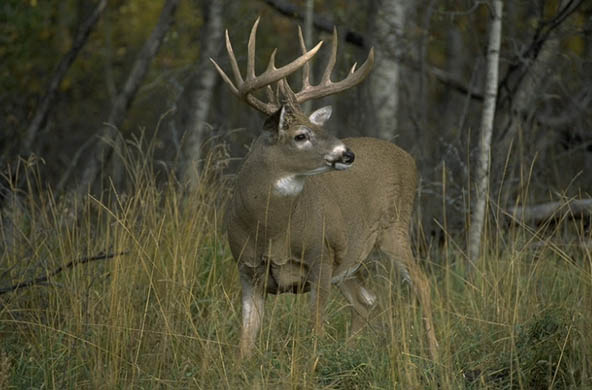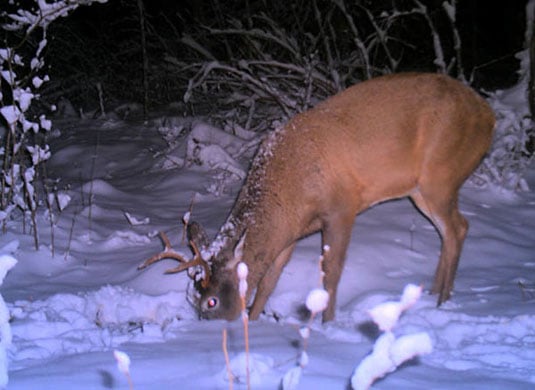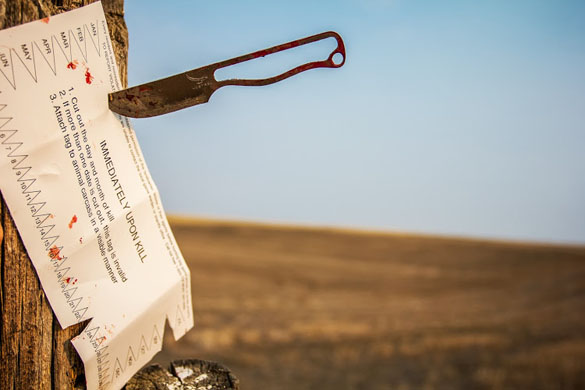LAST UPDATED: January 19th, 2015
ATHENS, Ga. – The U.S. Department of Agriculture’s new CWD certification program for captive elk and deer herds could hasten the disease’s spread, whether the animals are privately owned “livestock” inside fences or publicly owned resources living in the wild. That’s what Professor John Fischer of the University of Georgia told the 37th meeting of the Southeast Deer Study Group when the annual conference opened Monday morning. Fischer, a professor of animal-population health, is director of UGa’s College of Veterinary Medicine and the Southeastern Cooperative Wildlife Disease Study.
New federal guidelines on chronic wasting disease could increase CWD’s spread in the United States.
Elk breeders first asked for a federal program in 1998 to certify herds and set guidelines for interstate movements of captive elk and deer (cervids). Deer breeders joined the effort in 2002 after CWD was found in southwestern Wisconsin. The USDA finally published its rules on an interim basis in July 2012. In 2013, the USDA revised the “program standards” for implementing the rules, released the standards for review in November, and is taking public comments on them until March 31. Fischer summarized the revisions this way: They “increase the risk of CWD, they facilitate perpetuation of CWD in captive-cervid herds and the environment, and they increase the risk of CWD transmission from captive cervids to other captive herds, as well as to free-ranging wildlife.”
Fischer encouraged the approximately 400 private and public wildlife professionals and university researchers attending the SEDSG meeting to scrutinize the revised standards, talk to colleagues and submit comments before the deadline. “We need to get to work in exercising our political rights in trying to control the risks associated with … CWD … and with the captive-cervid industry,” Fischer said. “What’s at risk here is the health of our nation’s wildlife populations.” Fischer said the captive-cervid industry viewed the 2012 rules with “great disfavor” when they were first published, and persuaded the USDA to appoint a review panel to revise the program’s standards. Fischer was part of that review panel, along with state veterinarians, captive-cervid representatives, three state wildlife agency personnel, and staff from the USDA’s Animal and Plant Health Inspection Service.
“That turned out to be a rather undemocratic process, and it didn’t (work) to my satisfaction or the satisfaction of a lot of people outside the captive-cervid industry,” said Fischer, a 21-year veteran of the SCWDS. In his role as SCWDS director, Fischer works with wildlife agencies in 19 states, the USDA and the U.S. Department of the Interior regarding disease impacts on wildlife.
New federal guidelines allow deer-farm owners to move animals from CWD-exposed herds or suspected herds to fenced “hunt facilities” and to quarantined herds within the same state.
CWD has been found in elk, deer and some moose in 22 states and two Canadian provinces, either in free-ranging herds or in private fenced facilities. Fischer said the USDA’s revised program standards do not meet its goals to help states, tribes and the captive-cervid industry minimize risks of introduction, transmission and spread of CWD. “In the revised version of the CWD program, nearly all of the guidelines, all the options that were more stringent, were deleted at the request of the captive-cervid industry; and more liberal guidelines were added that greatly increase risks,” Fischer said.
CWD has been found in elk, deer and some moose in 22 states and two Canadian provinces, either in free-ranging herds or in private fenced facilities.
For instance, to earn USDA certification as a low CWD risk, captive facilities must test all elk or deer older than age 1 when they die, and the monitoring must be done at least five years. But Fischer questions if five years of monitoring is enough. In 2012, CWD was discovered in captive facilities in Iowa and Pennsylvania for the first time, and in a Minnesota facility holding red deer. The Minnesota facility had been monitoring for CWD for 12 years before one of its red deer tested positive, and the facilities in Iowa and Pennsylvania had been monitored for nine years each. Fischer also worries that the guidelines allow owners to move animals from CWD-exposed herds or suspected herds to fenced “hunt facilities” and to quarantine herds within the state. Further, “approved states” can request to move animals from CWD-exposed and “suspect” herds to slaughter facilities, CWD-positive hunt facilities, or hunt facilities in CWD-endemic regions in other states. Fischer said those guidelines contradict the USDA’s own standards. “The rule states that it ‘ensures captive cervids moved interstate are considered low risk for CWD,’” he said. “How are those animals at low risk for CWD when they’re coming from positive, suspect or exposed herds?”
The U.S. Department of Agriculture is taking public comments on its new CWD policy until March 31.
The USDA justifies the transportation of possibly infected animals “for the purpose of selective culling and continuity of business.” In other words, rather than follow its preferred method of “depopulating” infected herds after compensating owners, the USDA will let owners find a shooter to kill and pay for the animal. Fischer told conference attendees to not rely on the USDA to minimize disease risks for the captive-cervid industry or to help reduce CWD risks to free-ranging deer. “Ultimately, you need to develop or enhance your state’s CWD control program to mitigate the risks of the captive cervids … to a level you find acceptable,” he said.
The USDA’s July 2012 rule package CLICK HERE
To read the rule’s revised “program standards,” CLICK HERE
To offer comment on the revisions: CLICK HERE








